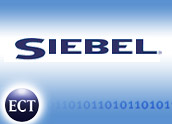
Even in a slow week for CRM news, you might have missed a couple of announcements that might have a significant impact on the future of the enterprise software market, including CRM.
Last week, RightNow, a newly public OnDemand call center company, announced that it had joined the WS-I, an independent industry-standards group promoting Web services.
RightNow is not alone. There are 170 software companies already involved in the consortium. At the same time, WS-I announced general availability of its Basic Profile 1.1, Attachments Profile 1.0 and Simple SOAP Binding Profile — Web services standards.
Web Services is a set of technology standards that help disparate applications share information using XML technology and protocols like SOAP. The Web site for the World Wide Web Consortium describes SOAP as “[A] lightweight protocol intended for exchanging structured information in a decentralized, distributed environment.”
The site also says: “The advent of XML makes it easier for systems in different environments to exchange information. The universality of XML makes it a very attractive way to communicate information between programs. Programmers can use different operating systems, programming languages, etc., and have their software communicate with each other in an interoperable manner.”
Interoperability and Web Services
Some readers will no doubt look at this and think I am reciting ancient history. While they’re not exactly ancient, XML, SOAP and other protocols have been around for a while, and many people — especially those who write code for CRM and other enterprise applications — know of these technologies and increasingly refer to them under an umbrella term “Web services.”
What’s important about Web services is that they enable great interoperability and extensibility in applications, and they can be combined in a loosely coupled way that can help users achieve complex operations. Almost like Chaos Theory, simple services can interact with each other to deliver complex and sophisticated results.
Business Impact
If you are like me, knowing something about the technology is nice but understanding the business impact is even more interesting. It might be hard to overstate the potential business impact of Web services because they represent the key to a very old lock in the enterprise-software industry.
For the whole history of the software industry, applications barely spoke to each other and then only with great difficulty and expense. Interfaces were always in need of tuning as one side of the integration or the other changed to meet evolving business needs. Needless to say, integration was brittle.
However, Web services have the potential to change all that, and with it, the prevailing business model of the enterprise-software industry will change.
What might a new, or at least the next, software industry business model look like? For starters, like the applications themselves, it will probably be much more decentralized. Consider this: virtually every industry we know, from auto manufacturing to movie production, has undergone a decentralization process over the last few decades, except enterprise business software.
The enterprise-software industry is still vertically integrated to a very high degree. A vendor is responsible for research and development, sales, marketing and a hundred other things that go into delivering a product to the market. But what if, rather than developing the world’s umpteenth GL package, a software company could simply link in one that’s already built with minimal fuss?
Business Model for 21st Century
The mainstreaming of Web services is important because it promises to change the whole business model of the enterprise-software industry by enabling it to deverticalize. Some changes you can expect include:
Many people have noted the seeming lack of some “new, new thing” to propel the tech industry. Some have advocated taking care of the unfinished business of making everything that we already have work. But making everything work doesn’t mean hanging on to the status quo.
The new, new thing is a new business model based on an architecture that really can promote interoperability. That’s a worthwhile challenge and one that will employ quite a few of us over the next decade.
Denis Pombriant is former vice president and managing director of Aberdeen Group’s CRM practice and founder and managing principal of Beagle Research Group. In 2003, CRM Magazine named Pombriant one of the most influential executives in the CRM industry.













































Social CRM
See all Social CRM